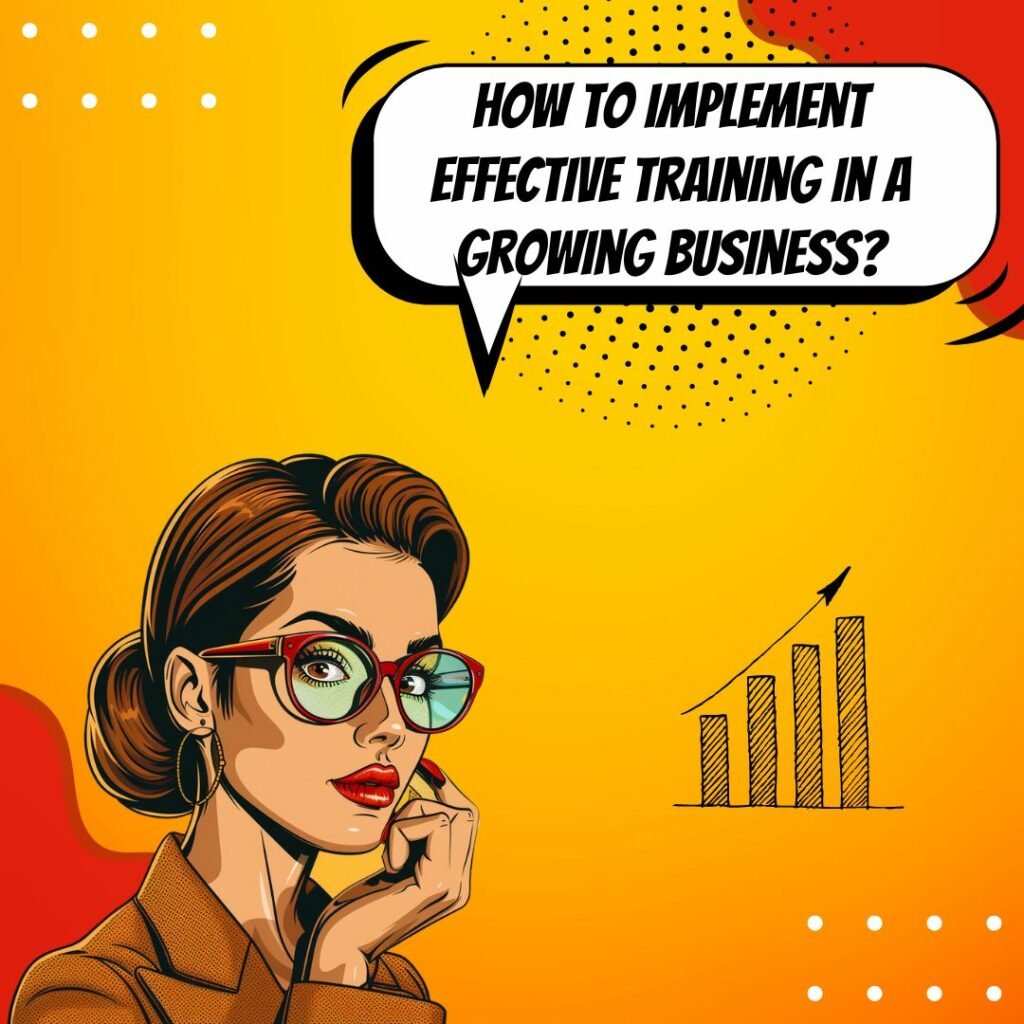Key Takeaways
✅ Employee Engagement and Retention: Without a doubt, training and development sit at the heart of keeping a team happy and at their desks. A whopping 87% of folks punching in at the 2023 Fortune 100 Best Companies to Work For say they're given chances to get better at their jobs. That's not just good for morale; it's a secret weapon against the headache of hiring new faces.
✅ Personalized and Relevant Training: It's not just about throwing information at your team and hoping it sticks. Training that hits the mark is like a bespoke suit; tailored just right. By honing in on what each employee really needs to learn, companies can turn ordinary training into a powerful tool for growth.
✅ Alignment with Business Goals: Ever tried rowing a boat where everyone's doing their own thing? Doesn't get you far, right? That's why aligning training with where your business wants to go is crucial. Setting clear goals and measuring the journey there makes sure everyone's paddles hit the water at the same time.
 Introduction
Introduction
Ever wonder why some businesses are the hot ticket, the places where everyone wants to work, while others can't seem to catch a break? The secret often lies in training and development. But hold up, it's not just about sitting in a stuffy room watching slide after slide. In today's fast-paced world, effective training can be the jet fuel that propels a business from lukewarm to meteoric success.
Curious about how you steer your ship into these prosperous waters? This dive into training and development in a growing business isn't your everyday yawn-fest on corporate learning. We're peeling back the curtain on how top-tier companies use training not just as a checklist item, but as a strategic powerhouse fueling employee engagement, retention, and lining up those dominoes right to knock over big, ambitious business goals. Stick around, because we're about to unpack some groundbreaking insights that could very well be your blueprint to unheard-of success.
Top Statistics
| Statistic | Insight |
|---|---|
| 92% of candidates will choose a company with learning and development opportunities | This impressive figure highlights the growing importance of professional growth in job selection, emphasizing why companies should invest in learning programs. |
| 50% of companies in the US do not have a formal training program | A surprising statistic that reveals a significant gap in employee development, suggesting a potential edge for companies who do establish structured training. |
| 39% of organizations say a lack of budget is a barrier | This statistic sheds light on the financial challenges companies face, suggesting the need for cost-effective training solutions. |
| 86% of employees say they’d switch jobs for one with more growth opportunities | This number underlines the critical role that career development plays in employee retention and satisfaction. |
| Companies that invested in employee development saw a 58% increase in retention | This statistic clearly indicates the direct benefit of training programs on retaining top talent, showcasing a return on investment in human capital. |
Why Training and Development Matters
In the fast-paced environment of a growing business, the importance of training and development cannot be overstated. It's about more than just bringing your team up to speed on the latest tools or processes; it's a solid investment in the future of your company. Consider this: organizations that prioritize employee development are more likely to retain their staff, with studies from LinkedIn showing that opportunities for learning and growth can significantly decrease turnover rates. Furthermore, training and development have been proven to boost job satisfaction and overall productivity. The Society for Human Resource Management (SHRM) found that companies with comprehensive training programs see a marked improvement in their bottom line, as well-prepared employees are often more effective and efficient.
Creating a Successful Training Plan
Developing an effective training plan is not about one-size-fits-all solutions; it's about understanding the unique needs of your organization and your workforce. The first step involves a thorough assessment to identify gaps in skills or knowledge. Next, the plan you develop must be targeted, accessible, and aligned with your company's objectives—and don't forget, it needs to have clear metrics for success. Initial testing with a small group can offer valuable insights to refine the program. Remember, the best training plans are never static; they evolve based on regular evaluations and feedback from participants.
Effective Strategies for Learning and Development
Integrating learning into the flow of daily work is a challenge but not impossible. Strategies that bring training into the context of day-to-day tasks make learning more relevant and engaging. For example, micro-learning modules that employees can complete in short bursts fit neatly into busy schedules, while regular reminders can help reinforce new information. Incorporating time for reflection allows employees to assess their progress and apply learnings directly to their work. The goal is to make learning a natural part of the working day rather than a disruption.
Empiring Managers in Training and Development
Managers play a pivotal role in the professional development of their teams. By actively participating in the training process, managers can ensure that programs address the real-world challenges their teams face. Empowering managers means providing them with the tools and resources needed to support their team's learning, setting aside time for development activities, and involving them in the planning and feedback process. This approach not only enhances the relevance of training but also helps translate new skills and knowledge into actionable improvements in work performance.
Implementing Training Programs
Today, businesses have a wide array of options for delivering training, from online learning platforms like LinkedIn Learning to in-house mentorship programs. Each method has its advantages and challenges, but the key lies in choosing formats that match the learning preferences of your employees and the objectives of your business. Whether it's through digital courses that offer flexibility and breadth or more personal mentorship relationships, the best training programs are those that are accessible and engaging for all participants.
Measuring Success and Overcoming Challenges
Tracking the effectiveness of training and development initiatives is crucial, yet many organizations struggle with identifying the right metrics. HR software and analytics tools can provide invaluable data on participation rates, completion rates, and the application of new skills on the job. However, sustaining employee engagement and demonstrating a clear return on investment (ROI) remain persistent hurdles. Solutions include building more interactive and relevant training experiences and continuously aligning learning objectives with business goals. Remember, the ultimate measure of success is how well training and development efforts translate into improved performance and business outcomes.
In sum, the importance of training and development in a growing business cannot be overstated. From elevating job satisfaction and productivity to empowering managers and effectively measuring success, the right strategies can yield substantial benefits. Despite the challenges, with careful planning and implementation, training programs can become a pivotal part of your company’s growth and success strategy.
AI Marketing Engineers Recommendation
Recommendation 1: Leverage Data Analytics for Personalized Learning Paths: In today's fast-moving business world, a one-size-fits-all approach to Training and Development in a Growing Business simply doesn't cut it. Instead, the data suggest tailoring training programs to individual employee needs significantly boosts engagement and effectiveness. Recent stats show personalized programs can increase skill competency by up to 34% more than generic training methods. By employing analytics to understand each team member's strengths and learning gaps, businesses can create personalized development plans leading to more efficient learning and better performance outcomes.
Recommendation 2: Adopt Microlearning for Continuous Skill Development: With attention spans dwindling and the pace of business accelerating, microlearning emerges as a powerful trend in Training and Development in a Growing Business. Microlearning involves short, focused training modules designed to teach a specific skill or concept quickly—often in just a few minutes. This approach not only fits the modern worker's lifestyle but also meets the demand for ongoing skill development in a dynamic business environment. Studies have found that microlearning boosts knowledge retention by up to 80%, making it a highly effective strategy for fostering continuous learning and adaptability among employees.
Recommendation 3: Utilize Virtual Reality (VR) Training Simulations: Virtual Reality technology offers an immersive learning experience that traditional methods can't match, particularly for hands-on skills or complex problem-solving scenarios. Within the context of Training and Development in a Growing Business, implementing VR training can massively enhance learning outcomes by simulating real-world challenges in a controlled, risk-free environment. Research shows VR learners achieve a 75% higher retention rate compared to traditional learners. This not only speeds up the learning process but also enables employees to practice and hone their skills without the real-world pressures or consequences, preparing them more effectively for on-the-job challenges.
Relevant Links
- Revolutionize Your Marketing with AI Technology
- Unlock the Power of Personalized Advertising
- Leverage Behavioral Insights for Improved Marketing
- Key Strategies for Impactful Marketing Campaigns
- Driving Market Penetration with Campaign Reach
Conclusion
The importance of training and development in a growing business, advanced digital marketing strategies utilizing AI technology, SEO optimization through AI-generated content, and sales performance enhancement through targeted training and customer engagement strategies are essential for achieving significant growth and success. By incorporating these insights and leveraging the array of resources and strategies provided in the links above, businesses can effectively navigate the complexities of modern marketing landscapes, optimize their online presence, and foster a culture of continuous learning and development.
Conclusion
In the vibrant landscape of growing businesses, training and development stand as pillars that not only hold the structure together but also push its boundaries outward and upward. Reflecting on the journey we've navigated together through this discourse, the paramount importance of fostering an environment where learning is continuously woven into the fabric of daily operations is undeniable. By leveraging compelling evidence from LinkedIn, SHRM, and other reputable sources, we've seen the tangible benefits that come from prioritizing employee growth - benefits like higher retention rates, increased job satisfaction, and, ultimately, a spike in productivity.
Crafting a successful training plan is not just about ticking boxes; it's about assessing needs, setting measurable goals, and adjusting sails based on the winds of feedback. And let’s not forget the critical role of managers in this ecosystem. They're not just supervisors; they're catalysts for transformation, equipped to translate learning into actionable insights. Implement as many online platforms, mentorship programs, or micro-learning experiences as you like, but without the commitment from those at the helm, these initiatives risk falling flat.
We've also grappled with challenges, from drumming up engagement to proving ROI, yet the solutions seem to lie within the problems. Tracking metrics through HR software, for example, not only offers a gauge on progress but also a map for future courses. This cyclic process of action, feedback, and refinement is what keeps the gears of training and development turning, propelling businesses from mere growth to true evolution.
As we stand on the precipice of tomorrow, let's not just acknowledge the significance of ongoing employee development but embrace it as the heartbeat of any thriving business. Whether you're a small startup or a burgeoning enterprise, the question isn't if you can afford to invest in training and development. It's whether you can afford not to. The landscape of industry is ever-changing, and in this constant shift, firms that empower their employees through continuous learning opportunities are the ones that will not only survive but flourish. So, let the insights garnered here serve not merely as knowledge but as a call to action. The future of business is learning - are you ready to embrace it?
FAQs
Question 1: What is employee development training?
Answer: Think of employee development training as that boost you give your team to help them grow their skills, knowledge, and capabilities at work. It's like giving them a map to navigate the professional world more effectively.
Question 2: Why is employee development vital for businesses?
Answer: Imagine a workplace where everyone's learning, growing, and loving their job. That’s what happens when businesses focus on employee development – productivity shoots up, everyone's happier, and your business becomes this unstoppable force of innovation.
Question 3: What are the different types of employee development training?
Answer: It's not just about sitting in a room listening to someone talk. Training can range from polishing up technical and soft skills to leadership development, not to mention cool micro-learning modules and getting hands-on with Virtual IT Labs.
Question 4: How can employee development training be customized for diverse learners?
Answer: Everyone learns differently, right? By using surveys, Q&As, and one-on-ones, training can be tailored to fit each individual like a glove. It's all about making sure nobody's left behind.
Question 5: What role do modern technologies like VR and AR play in employee development training?
Answer: Imagine learning by doing, but in a risk-free virtual world. That’s what VR and AR bring to the table – an immersive, interactive experience that makes learning stick.
Question 6: How can ongoing development be ensured in a rapidly changing business landscape?
Answer: With the business world always shifting, keeping up means embracing continuous learning. Refresher courses, micro-learning, and Virtual IT Labs keep the knowledge fresh and employees on their toes.
Question 7: How can resource limitations be navigated in employee development training?
Answer: Think smart – it's not about throwing money at the problem. Prioritize what’s most important, get creative with cost-effective tools, and focus on what truly matters.
Question 8: What metrics should be used to evaluate the success of employee development training?
Answer: How do you know if it's working? Look at completion rates, how well skills are being applied in the real world, and the training's return on investment. It's all about seeing tangible results.
Question 9: What are some key questions to ask during one-on-one meetings for career development?
Answer: This is your chance to dig deep – ask about skills gaps, promotion paths, and opportunities for collaboration. It’s like piecing together a career roadmap together with your team.
Academic References
- Gutterman, A. S. (2023). Training and Development. Journal of Organizational Behavior Management. This paper discusses the shift towards a comprehensive approach in organizational training, transitioning from a mere focus on technical skills to fostering overall learning and knowledge-sharing. Gutterman underscores the necessity of aligning training efforts with business objectives and enhancing collaboration with human resources.
- Marquis, G. L. (2005). Development of Handbook Addressing Self-Efficacy and Intrinsic Motivation in the Corporate Training Setting. Ph.D. Dissertation, University of Massachusetts Amherst. This work revolves around creating a manual tailored for corporate training environments, aimed at boosting self-efficacy and sparking intrinsic motivation among employees, which are crucial for their development and progress.
- Noe, R. A. (2013). Employee Training and Development. New York, NY: McGraw-Hill. Offering a broad perspective on employee training and development aspects, Noe discusses the intricacies of training design, implementation, and its critical role in augmenting organizational performance and employee motivation.
- Bramley, P. (1997). Evaluating Training Effectiveness. London: McGraw-Hill. Bramley provides actionable advice on gauging the impact of training initiatives, proposing strategies to measure the outcomes and their implications on business success, thereby helping organizations in refining their training methodologies.
- Kirkpatrick, D. L. (1994). Evaluating Training Programs: The Four Levels. San Francisco: Berrett-Koehler. This seminal work introduces the Kirkpatrick Model, an enduring evaluation framework that assesses training programs on reaction, learning, behavioral change, and results, assisting practitioners in understanding the efficacy of their training solutions.
- Latukha, M. (2016). Creating Talent Organization Via Employees’ Training and Development. In Strategic Talent Management: Contemporary Issues in International Context. Latukha examines the critical role of training and development in fostering a talent-driven organization, pinpointing strategic talent management as a cornerstone for corporate excellence.
- Shaw, P., & Wheeler, L. (2022). Digital Networking and the Case of Youth Unemployment in South
Africa. In Emerging Trends in Global Employment. This chapter sheds light on leveraging digital platforms for mitigating youth unemployment challenges in South Africa, suggesting a need for targeted training programs that enhance digital skills and employability. - Vardarlıer, P., & Türk, A. (2022). Green Human Resources Management Integration with Employee Performance and Training Development Function of the Energy Sector. In Handbook of Research on Green HR Practices and Environmental Performance in Organizations. This analysis delves into how embedding green HR practices within the training and development agenda positively influences employee performance and the sustainable growth of the energy sector.












